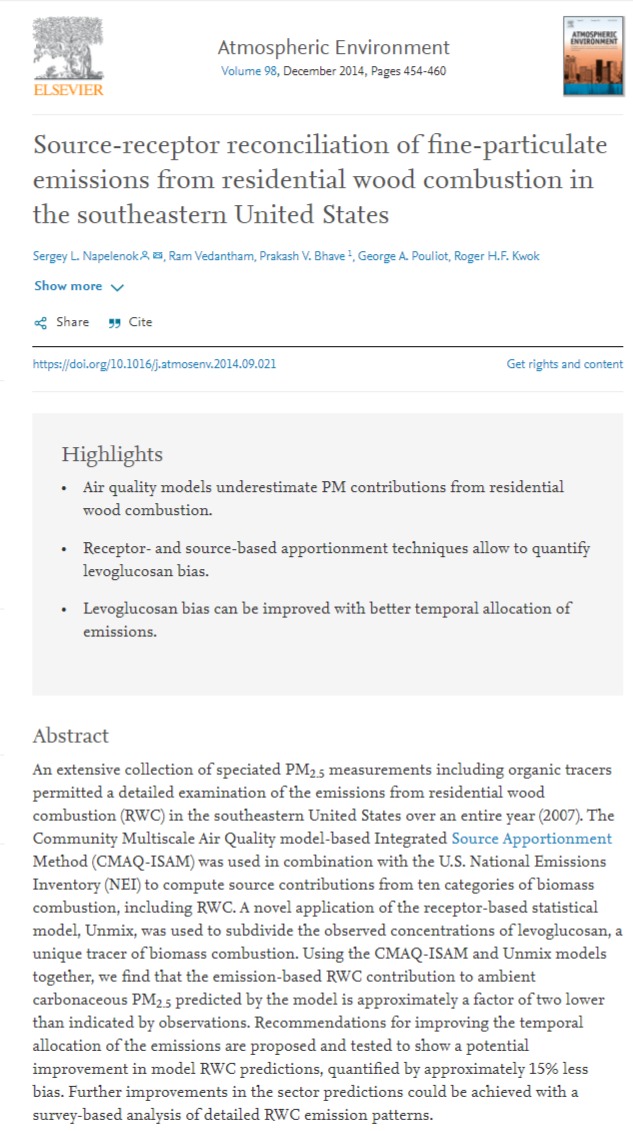
An extensive collection of speciated PM2.5 measurements including organic tracers permitted a detailed examination of the emissions from residential wood combustion (RWC) in the southeastern United States over an entire year (2007). The Community Multiscale Air Quality model-based Integrated Source Apportionment Method (CMAQ-ISAM) was used in combination with the U.S. National Emissions Inventory (NEI) to compute source contributions from ten categories of biomass combustion, including RWC. A novel application of the receptor-based statistical model, Unmix, was used to subdivide the observed concentrations of levoglucosan, a unique tracer of biomass combustion. Using the CMAQ-ISAM and Unmix models together, we find that the emission-based RWC contribution to ambient carbonaceous PM2.5 predicted by the model is approximately a factor of two lower than indicated by observations. Recommendations for improving the temporal allocation of the emissions are proposed and tested to show a potential improvement in model RWC predictions, quantified by approximately 15% less bias. Further improvements in the sector predictions could be achieved with a survey-based analysis of detailed RWC emission patterns.